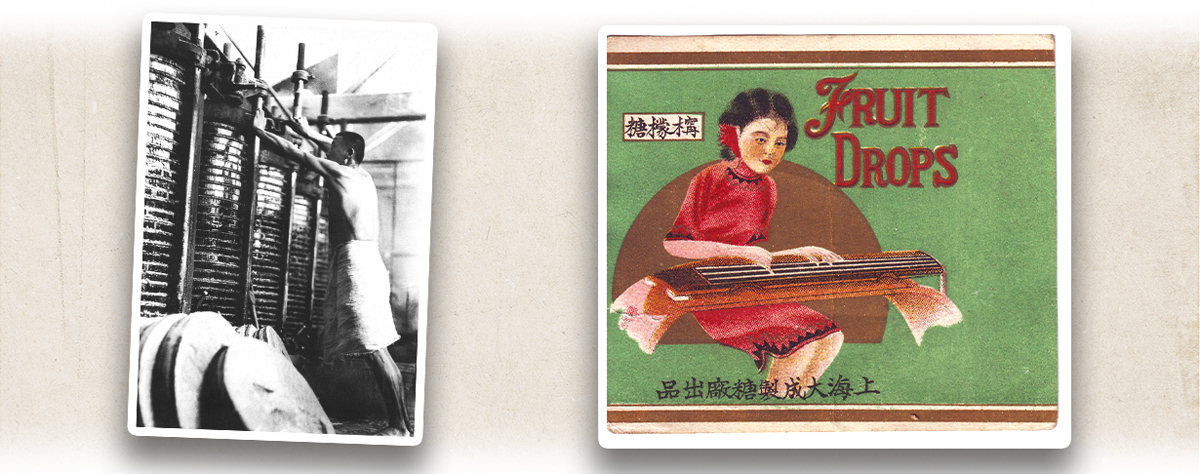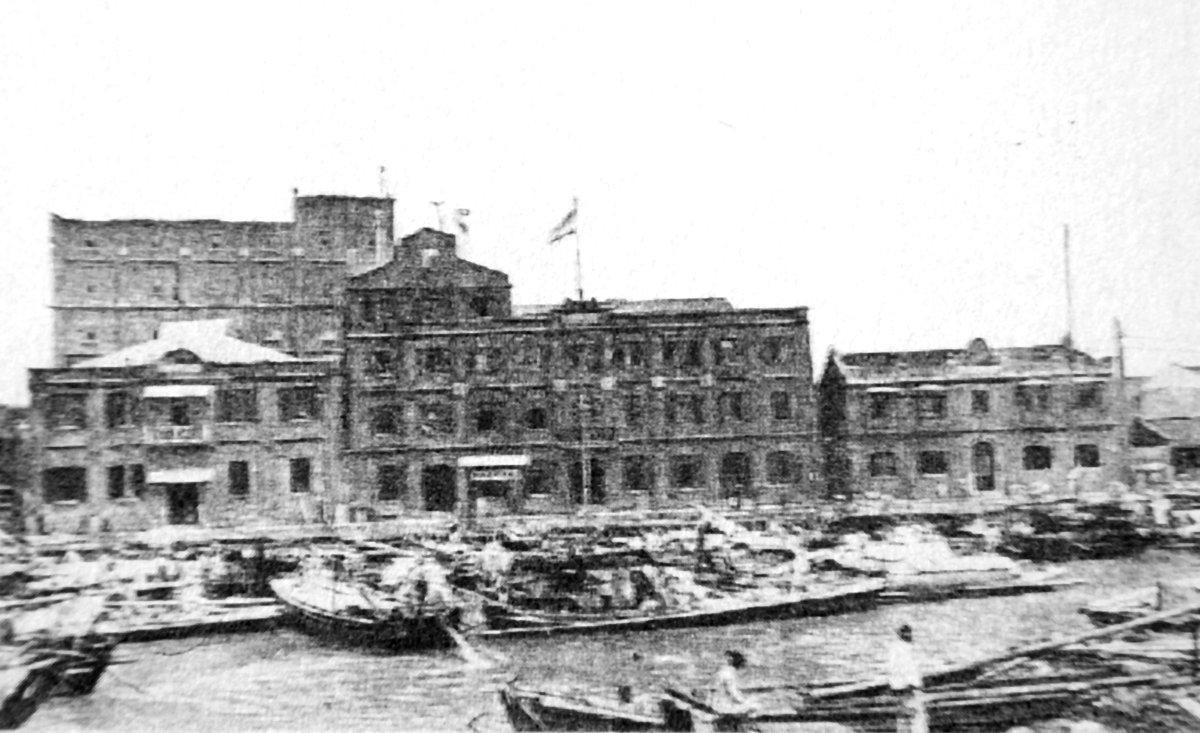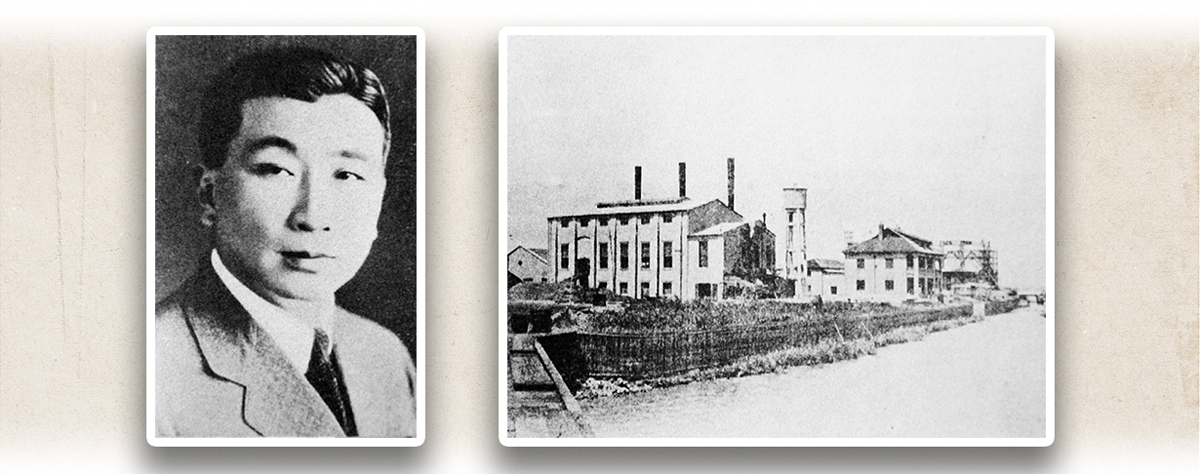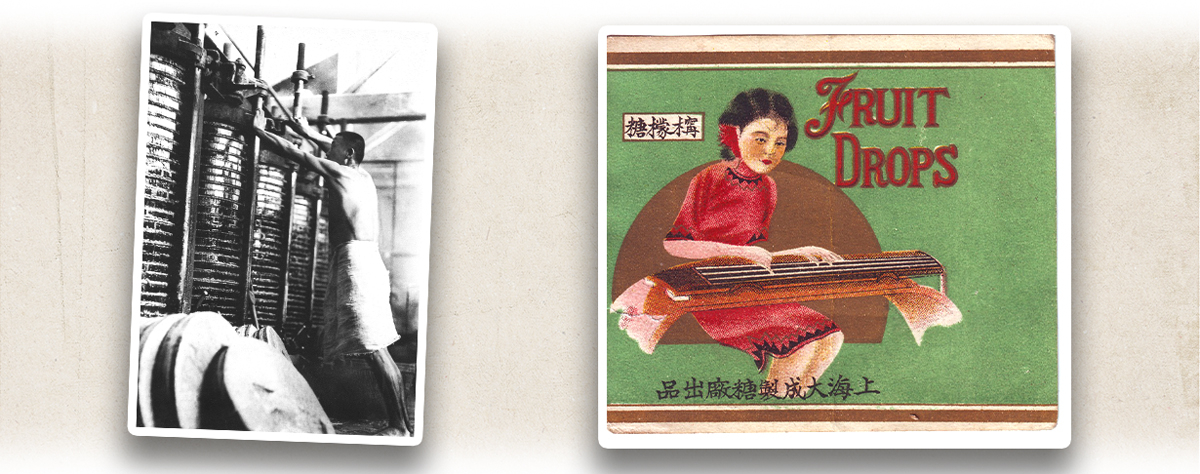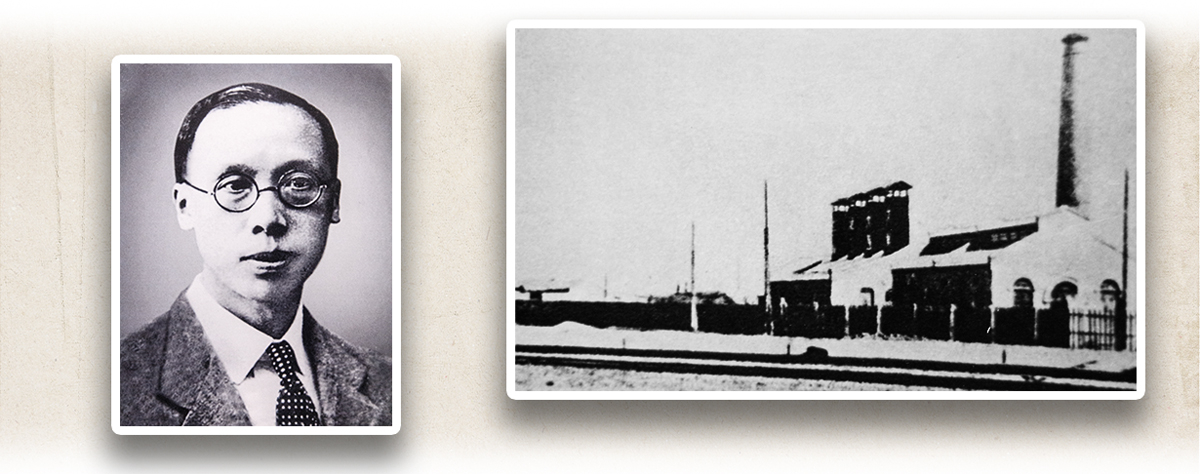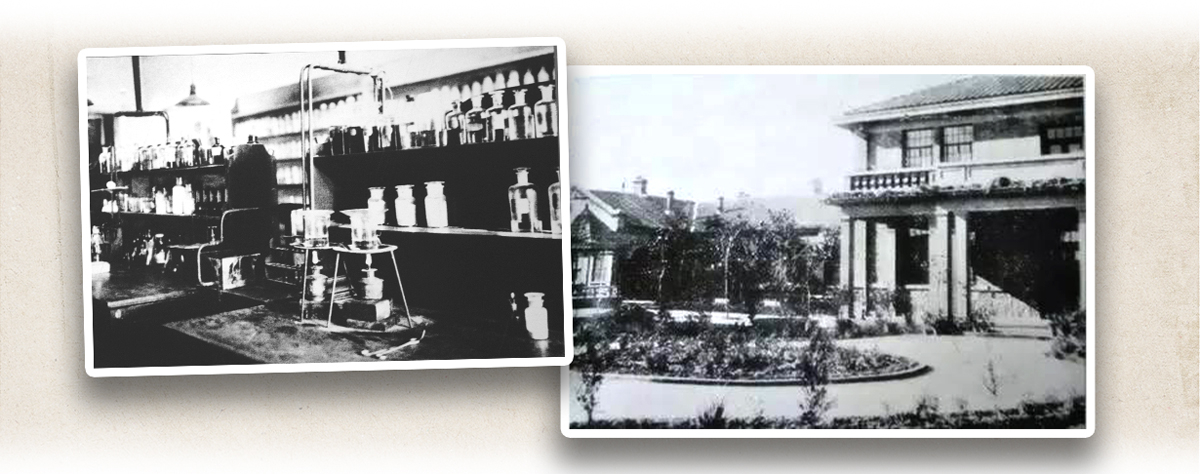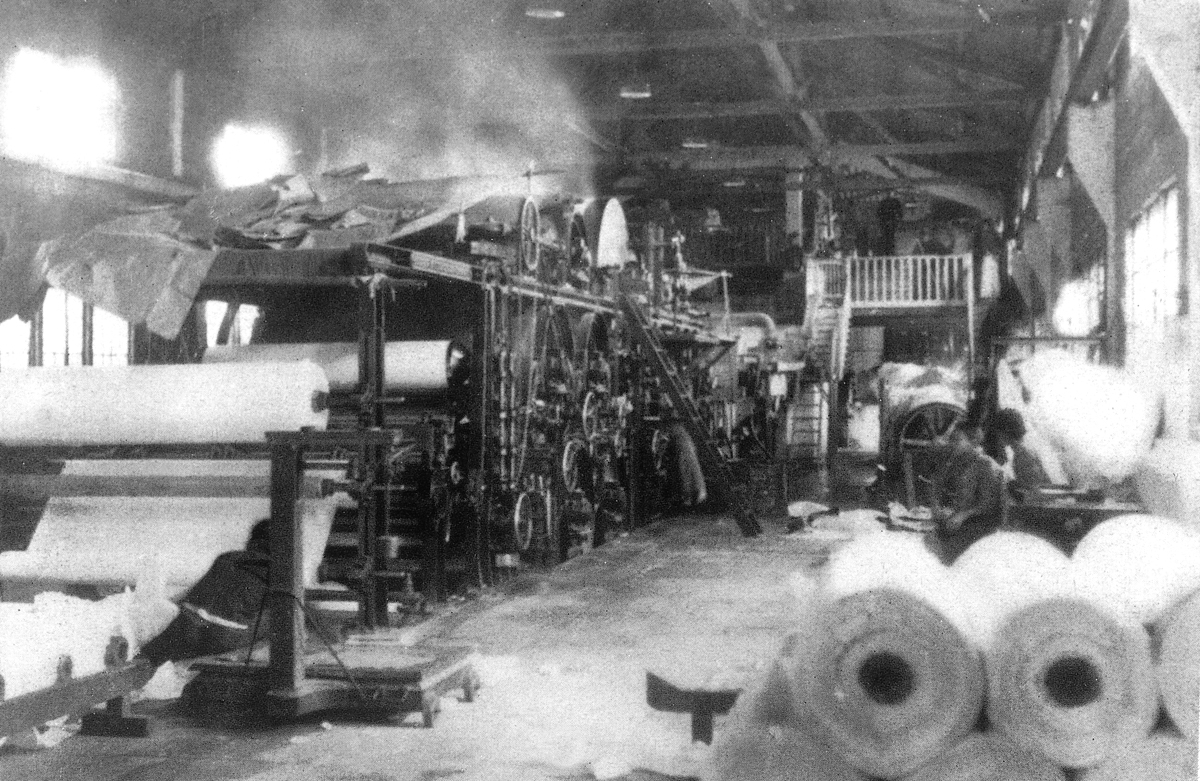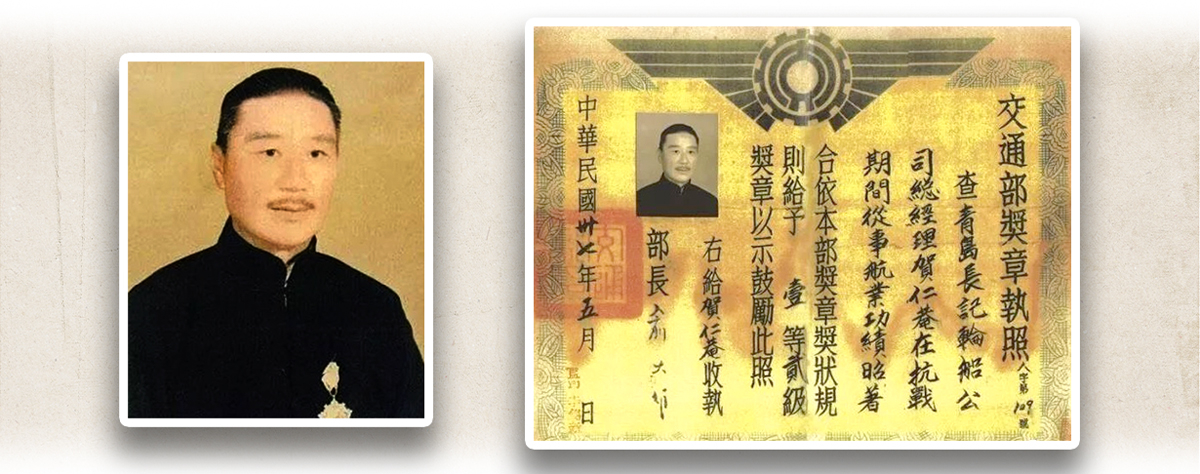“National bourgeoisie capital” refers to a country’s own private capital. It includes the non-governmental and non-foreign capital in its economic sector. The stronger a country’s national bourgeoisie capital, the stronger its industry and commerce, and thus the more robust its overall economy. This capital can promote coordinated development in other fields including scientific research and education, bringing prosperity to the nation and higher living standards to its people. This has been the case for Europe, the United States, and Japan in modern times. After the founding of the Republic of China (ROC) in 1912, the country, despite remaining fraught with internal and external challenges, witnessed certain economic growth and a speed-up in national bourgeoisie capital.
Capitalism emerged in China in the late Ming dynasty (明代), but it failed to develop further. After the Opium War in 1842, China’s economic lifeline was subject to heavy manipulation by foreign capital suddenly imported in huge volumes. The Self-Strengthening Movement in this period sparked the inception of modern China’s national bourgeoisie capital. Although new national industry and commerce emerged in the country, these could hardly compete with its foreign counterparts. In the early Republican years, China was fraught with wars among warlords. Although these warlords advanced the economic development within their respective jurisdictions, their incessant battles impeded the national economic development.
Western powers could not divert their attention from the European warfare during World War I, China’s national bourgeoisie capital was thus gifted with a “transient spring”. From 1914 to 1919, 379 new factories and mines were established (63 per year on average) and 85.8 million Chinese yuan was newly invested (14.3 million Chinese yuan per year on average), representing a more-than-doubling of both figures when compared with the previous 19 years. From 1913 to 1920, the average annual growth rate of national bourgeoisie capital was 10.54 per cent, and the ratio of national bourgeoisie capital to domestic industrial capital rose from 16 per cent in 1913 to 22 per cent in 1920. Cotton textile and flour milling demonstrated the fastest development, followed by manufacturing, mining and metallurgy, and shipping. Numerous other industries such as cigarettes, matches, cement, oil, paper, and sugar saw factories springing up as well. In addition to promoting economic development, national bourgeoisie capital during this time made significant contributions to scientific research, charity, and other fields.
During the golden decade (1928-37) of national unity following the Northern Expedition, national bourgeoisie capital, industry, and commerce all grew fast. However, the development of private bourgeoisie capital was then seriously hampered by the eight-year Total War of Resistance Against Japanese Aggression and the four-year civil war between the Kuomintang of China (中國國民黨) and the Chinese Communist Party (中國共產黨), as well as under the constraints of bureaucrat capitalism. The containment of national bourgeoisie capital seriously affected China’s economic development. In 1936, modern industries only contributed 10.8 per cent of China’s domestic industrial and agricultural production value. In 1949, the ratio increased to a mere 17 per cent, which served as evidence of the slow growth.
|
|
What were the constraints attributing to the slow development of private bourgeoisie capital development in China at that time? |
|
|
See answer below. |
From left to right: Rong Zongjing (榮宗敬), Rong Desheng (榮德生), and Rong Yiren (榮毅仁). Rong Zongjing and his younger brother Rong Desheng were representative national industrialists of the Republican period. Originally from Wuxi (無錫), Jiangsu Province (江蘇), they founded and operated a number of businesses including cotton and flour mills. The family business was later inherited and run by Rong Yiren, the son of Rong Desheng.
After the founding of the People’s Republic of China in 1949, the transformation of private into public ownership sped up. In 1956, Rong Yiren handed his family business over to the country. From 1978, he applied his experience in business operations to assist the country in reforming and opening up. From March 1993 to March 1998, he served as Vice President of the People’s Republic of China.
Foo Sing Flour Mills (福新麵粉廠) founded by brothers Rong Zongjing and Rong Desheng on Guangfu Road (光復路), Shanghai (上海), in 1912.
Sung Sing Cotton Mill (申新紡織公司) founded by Rong Zongjing and Rong Desheng on South Baili Road (白利南路, now Changning Road﹝長寧路﹞), Shanghai, in 1915. During the Republican period, it was the largest private-owned cotton mill in the country.
In 1931, Sung Sing Cotton Mill was at its height, with nine factories countrywide, a total of 460,000 spindles, 4,757 looms, and more than 30,000 employees. In 1932, its actual owned capital reached 18 million Chinese yuan with total assets of over 64 million Chinese yuan.
Wing On Cotton Mill was founded by Kwok Lok, an overseas Chinese, in Shanghai in 1922. It was second only to Sung Sing Cotton Mill in terms of scale. Kwok was also the founder of the Wing On Department Stores in Hong Kong and Shanghai.
Left: Liu Hong Sheng (劉鴻生), a Republican-period industrialist who established and operated various industries. He was known as the “King of Coal”, “King of Matches”, “King of Cement”, and “King of Enterprise”. Right: Shanghai Portland Cement Works Company Limited founded by Liu in 1920.
Oil and sugar mills saw significant growth during the Republican period. Left: an employee working at Hengde Oil Mill (恒德油廠) in Wuxi, Jiangsu. Right: a Shanghai Dacheng Sugar Mill (上海大成製糖廠) advertisement for lemon sweets.
Hengde Oil Mill was founded by Pu Wenting (浦文汀) in 1918. In the 1930s it grew into the largest oil mill in the non-Japanese-occupied areas. Dacheng Sugar Mill was founded by Jiang Yibin (江義彬) in 1927. It was the first domestic mill to make sweets in various colours and invent rock sugar. Beyond running their businesses, many industrialists during the Republican period engaged in charity as well. For instance, Jiang founded and once served on the board of directors of the Shanghai Protectory for Child Refugees.
Left: Fan Xudong (范旭東), a chemical industrialist, was acclaimed as the “Father of China’s National Chemical Industry”. Right: in September 1914, Fan founded the Chiuta Refinery (久大精鹽公司) in Tanggu (塘沽), Tianjin (天津). It was China’s first refined salt factory.
Left: Yongli Alkali Company was the first associated enterprise to produce synthetic ammonia in China. The photo shows the laboratory in its alkali factory. Right: the Huanghai Research Society for Chemical Industry (黃海化學工業研究社), the first privately funded chemical research institute in China.
During the Republican period, Fan’s chemical business was represented by three companies: Chiuta Refinery (founded in 1914), Yongli Alkali Company (founded in 1918), and the Huanghai Research Society for Chemical Industry (founded in 1922). Chiuta Refinery, the earliest, provided abundant capital, technology, and talent for the establishment of the two later companies.
Papermaking played an important role in the ROC’s industrial development. The photo shows the Fujian Paper Mill (福建造紙廠) in Fuzhou (福州).
In 1929, Chen Xiqing (陳希慶) established Fujian Paper Mill Company Limited (“Fujian Paper Mill” for short). The mill was put into operation in 1932. With more than 180 workers, this largest mill in Fuzhou could produce approximately three tonnes of paper per day. With its growing output and quality, the mill’s products sold well in Tianjin (天津), Shanghai (上海), Hangzhou (杭州), Guangzhou (廣州), Chaozhou (潮州), and other cities. Before the outbreak of the War of Resistance, they were even exported to Southeast Asia. The mill suspended its production during the War of Resistance and the subsequent civil war. The threat of wars was a major issue confronting all industrialists during the Republican period.
The industrialists’ patriotic support manifested in various business activities. They were even willing to sacrifice their businesses to save the nation at critical moments. He Ren’an (賀仁菴), a shipping industrialist from Qingdao (青島), Shandong Province (山東), and the founder of Changji Shipping Company (長記輪船公司) was one such entrepreneur. In 1948, the National Government of the ROC formally awarded him for his contribution to the War of Resistance.
Changji Shipping Company was founded by He Ren’an in 1925. The company once won over the Japanese shipping companies to regain control of navigation rights in North China. By 1937, it owned over 20 ships of various sizes and set up branches and warehouses in Tianjin, Shanghai, and other port cities. With a number of shipping routes under its management in North China, he was acclaimed as the “Shipping King of North China”. The War of Resistance officially erupted nationwide after the Marco Polo Bridge Incident (盧溝橋事變, or July 7th Incident) in 1937. In response to the Government’s call, he sank seven of his company’s vessels to block the channel at Jiaozhou Bay (膠州灣) in Shandong, clogging the path of the invading Japanese warships and enabling the successful evacuation of Chinese military and administrative personnel. As a result, the company was put completely out of business. Only after the end of the War of Resistance in 1945 did it gradually resume operations.
In May 1948, Yu Dawei (俞大維), the Minister of Transportation and Communication of the ROC, awarded a medal and a certificate of merit to He Ren’an for his contribution during the War of Resistance. The certificate says: “In accordance with the Ministry’s rules for granting medals and certificates of merit, this Class-I Level-2 medal is hereby awarded to He Ren’an, General Manager of Qingdao Changji Shipping Company, for his outstanding contribution in terms of shipping during the War of Resistance. This certificate is to be kept by He Ren’an.” His daughter He Yufen (賀郁芬) later commented: “This honour came at a huge cost. It is given in return for my father’s sacrifice of nearly all his wealth. It is nearly impossible to describe the sorrow and hardship of that sacrifice in words.”
|
|
What were the constraints attributing to the slow development of private bourgeoisie capital in China at that time? |
|
|
In modern world history, private bourgeoisie capital, which is free from governmental or foreign intervention, has constituted a determining factor in countries’ capitalistic development. It has been crucial to a nation’s ability to prosper and to improve its civilians’ lives. The modern capitalist systems of Europe, the United States, and Japan all matured by virtue of strong private bourgeoisie capital. However, this was not the case in China. In China, the development of private bourgeoisie capital, or capitalism in any form, was primarily barred by the autocratic imperial system and the powerful landlord class. Western Europe, meanwhile, thrived with the Renaissance and Age of Discovery in the early 15th century, gradually starting down the path of capitalism. The Industrial Revolution that followed enabled the Western world to develop strong private capital and a full-fledged capitalist system. In the early Ming dynasty (明代), which was at least half a century before the Age of Discovery, Chinese explorer Zheng He (鄭和) launched seven long-range westward voyages. Yet unlike European expeditions, these journeys were to strengthen the imperial authority and acquire rare and valuable objects for the emperor’s pleasure instead of expanding capital per se. In the mid-Ming dynasty, trade and craft industries flourished in the regions of south Yangtze River (長江) and along the coastal areas of China, planting the sprouts of capitalism. Late Ming dynasty novels such as The Plum in the Golden Vase (《金瓶梅》) and Instruction Stories to Enlighten the World (《喻世明言》) depict social life in the Ming dynasty against the backdrop of the Song dynasty (宋代). However, the regime change in the late Ming and early Qing dynasty (清代) inflicted endless battles and catastrophic massacres in such as Jiading (嘉定) and Yangzhou (揚州), damaging China’s wealthiest regions including those south to the Yangtze River. Although the Qing dynasty experienced prosperity during the reigns of the Emperors of Kangxi (康熙), Yongzheng (雍正), and Qianlong (乾隆), as imperial power expanded outward, the country only became more enclosed. This consolidated the traditional peasant mode of production characterised by land monopolies with landlords leasing plots to peasants. Under these circumstances, capitalism had no room to develop. Then in the late Qing dynasty, China’s economy was manipulated by foreign control and capital when the feudal regime was amid decline. The country was reduced to a semi-colony. In addition, the Qing government was reluctant to reform itself. This limited the level of development from the Self-Strengthening Movement, the Hundred Days Reform, and other new policies, and private bourgeoisie capital thus had trouble advancing. National unity achieved by the Northern Expedition and the transient spring brought by World War I ushered in a brief golden period for China’s national bourgeoisie capital. Following that, however, were the War of Resistance, then the post-war rapid rise of bureaucratic capital, the civil war between Kuomintang of China (中國國民黨) and the Chinese Communist Party (中國共產黨), and the dominance of public ownership after the founding of the People’s Republic of China. All these made it impossible for private bourgeoisie capital to expand. The longstanding containment of private bourgeoisie capital is a major cause underlying China’s long-term weakness in modern times. |
Source of most photos used in this feature piece: Fotoe.




